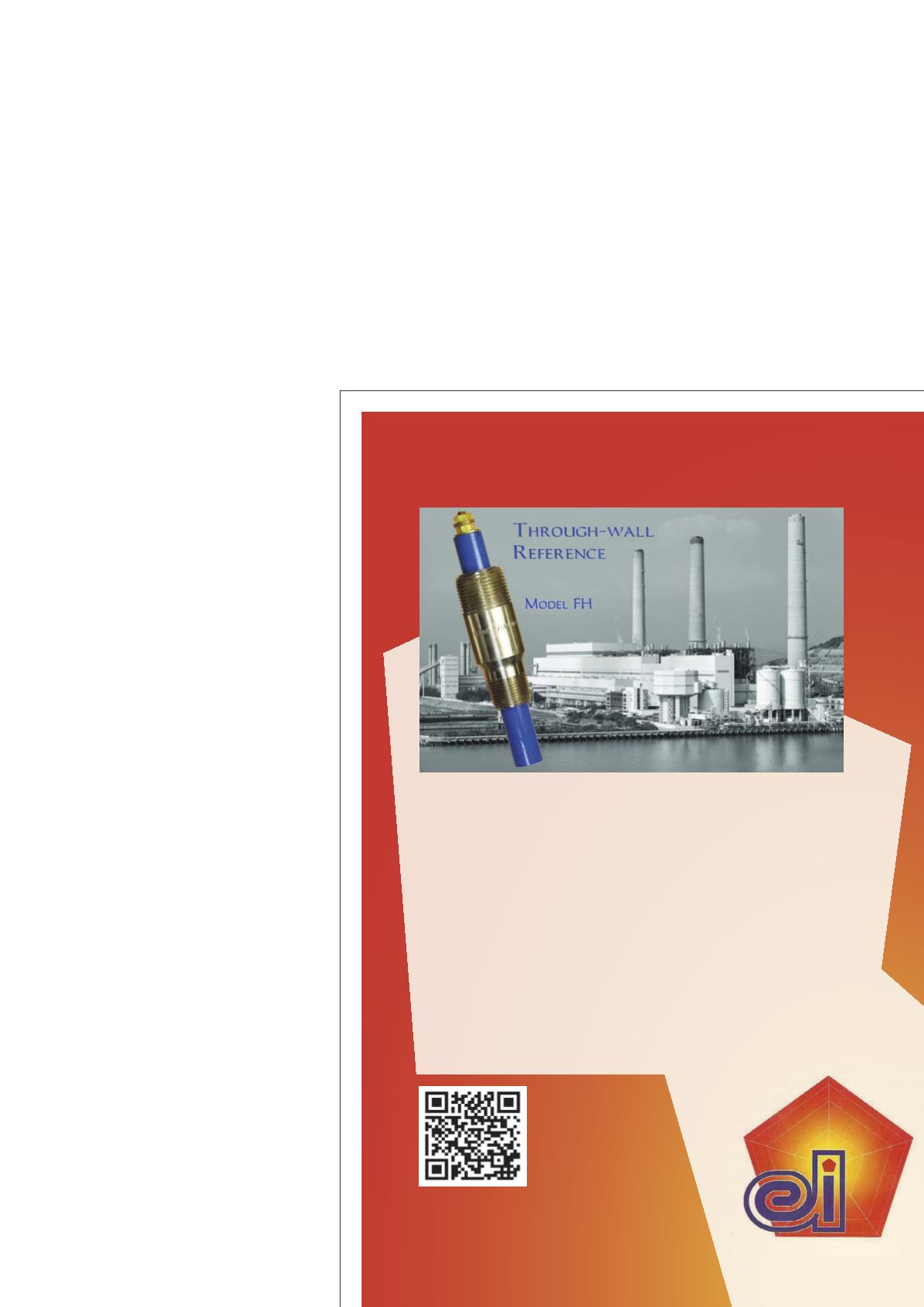
Manual 2D encoded scanners
The latest manual 2D encoded scanners can work on both
flat and curved surfaces and, unlike wheel probes, both
axes are encoded so there is no need to draw an index
line on the specimen when scanning.
With their compact, lightweight designs, these
handheld scanners aim to be agile and easy to deploy
even in hard-to-reach areas. The first such scanner was
Zetec’s NDT PaintBrush, introduced in 2016. Developed
specifically for detecting wall thickness reductions due to
corrosion, abrasion, or erosion, NDT PaintBrush is designed
to work with the company’s TOPAZ line of portable
phased array UT instruments. Two side-by-side encoded
wheels track the position of the scanner in real-time,
and allow the operator to monitor the
coverage area on the TOPAZ display as
they move the probe over the surface
of the material.
If there is coverage overlap, the
instrument’s software will take into
account the minimum thickness at the
same position; if a portion of the test
area has not been scanned, a real-time
image will be displayed on the scanner.
NDT PaintBrush’s 2D encoding, data
visualisation, and tactile feedback –
like brushing on a coat of paint – are
designed to make corrosion inspections
more intuitive and reliable.
‘Airborne’ UT encoding
For suppliers of UT equipment and
corrosion probes, it has been a long-
standing goal to combine the simplicity
and cost-effectiveness of manual
inspections with the rigour and data
quality of AUT. Last year, Structural
Integrity Associates introduced
LATITUDE, a non-mechanised position
and orientation encoding system that
is designed to enable an operator to
collect high-quality encoded data using
a manual examination process.
This manual manipulation provides
tactile feedback on surface condition,
contact, and coupling that can lead to
improved signal-to-noise results when
compared to mechanised delivery. The
manually applied sensor also allows the
examiner to more efficiently discern
and characterise component damage.
The encoding system consists of
three components:
)
A transmitter contains multiple
sensors for determining the axial
position, circumferential position,
and skew (rotation) of the fixture.
It is typically affixed to a non-
destructive examination (NDE) sensor that is being
used to conduct an examination, such as a phased
array UT probe, an eddy current testing (ECT) probe, or
any of several other kinds of NDE sensors.
)
The LATITUDE receiver array consists of a conformable,
magnetic collar for use on flat and curved surfaces.
Depending on the application, the collar can be
wrapped around the pipe circumference, stretched
along the pipe axis, or be otherwise placed on a flat or
curving surface.
)
An electronic control unit (ECU) for collecting
‘airborne’ ultrasonic signals, translating them into
Heavy Duty Through-wall Reference Electrode
7KURXJK ZDOO UHIHUHQFH HOHFWURGHV DUH XVHG IRU
PHDVXULQJ FRUURVLRQ SRWHQWLDO RQ WKH LQVLGH RI
FRQGHQVHU ZDWHUER[HV FLUFXODWLQJ SLSHV WDQNV
DQG YHVVHOV
7KHVH HOHFWURGHV DUH LQVWDOOHG
E\ WKUHDGLQJ LQWR D WDSSHG KROH RQ WKH ZDOO D
MXQFWLRQ ER[ LV W\SLFDOO\ DWWDFKHG WR WKH RWKHU
HQG WR SURWHFW WKH ZLULQJ FRQQHFWLRQV
$YDLODEOH LQ WKUHH VL]HV
HOHFWURFKHPLFDO GHYLFHV LQF
ZZZ HGL FS FRP _ ZZZ HGL FS EORJ








